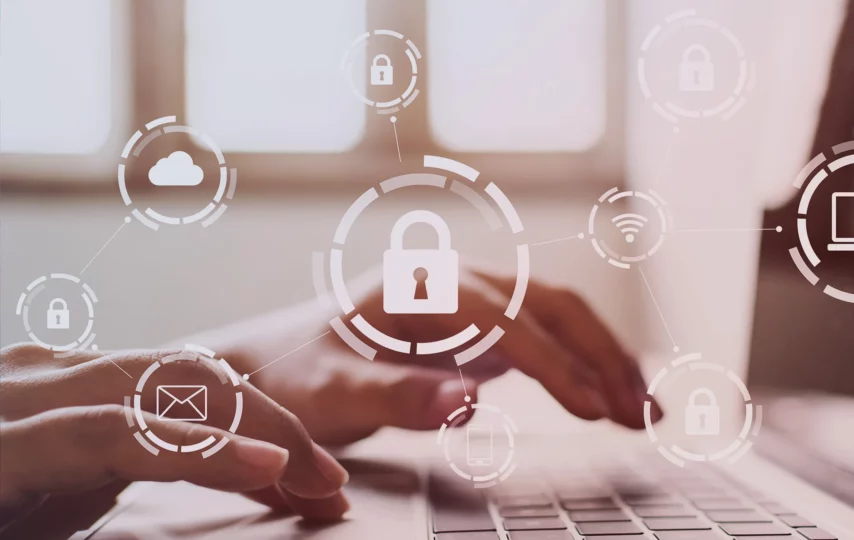As we move further into the digital age, cyber threats are becoming more and more sophisticated. By 2023, these threats will be greater than ever before – hackers have had three years to increase their skills and learn new ways to breach systems. Businesses and individuals must be aware of the hazards posed by cybercrime, as well as take proactive steps, such as solutions from https://acreto.io/ to secure themselves from potential threats. Companies should invest in cybersecurity training for their employees, encrypting data, and automatically updating any software to guarantee that they are always protected against cyber criminals.
Taking the necessary steps to protect yourself from cyber threats in 2023 and beyond starts with staying informed about online safety best practices. A threat intelligence solution can provide a comprehensive view of emerging cyber threats to help users stay prepared. Individuals should take extra caution while entering sensitive information such as credit card numbers, passwords, or contact details, and always implement secure passwords for all accounts. Digital life can be kept safe with these easy and effective steps taken today! While it can seem daunting at times to defend against cyber threats, taking the necessary protections now can help keep your digital life safe in 2023 and beyond.
Smart Devices as a Hacking Target
One of the most concerning cyber security threats of 2023 is that of smart devices being used as a hacking targets. Smart devices are connected to the internet and can be controlled remotely by hackers. This means that they can access sensitive data stored on these devices or even take control of them completely. As such, it is important for businesses and individuals to ensure that their smart devices are secure and protected from potential attacks.
Phishing and Social Engineering
Another major threat in 2023 will be phishing and social engineering attacks. These types of attacks involve sending emails or messages that appear to come from legitimate sources in order to trick people into revealing sensitive information or downloading malicious software onto their computers or phones. It is important for businesses and individuals to be aware of this type of attack so they can recognize it when it occurs and take steps to protect themselves against it.
Increasing Cyber Arms Race:
Despite advances in cyber protection technologies, older attack strategies remain highly successful. Recently released reports highlight that as technology progresses, defending against hackers has become increasingly complex. With artificial intelligence’s potential to accelerate and automate malicious behaviors, keeping up with attackers is a never-ending battle for defenders.
Crime as-a-Service
Crime-as-a-service (CaaS) is another growing threat in 2023 that businesses need to be aware of. CaaS involves criminals offering services such as malware creation, hacking tools, stolen data, or other illicit activities for hire online. This makes it easier for criminals to commit cyber crimes without having any technical knowledge themselves, which increases the risk posed by cyber criminals in 2023 significantly.
Infrastructure Vulnerability
Critical infrastructure is like a giant bullseye on the back of our country, yet so few have recognized the importance of protecting it. Not only do hackers have the potential to damage fundamental systems such as electricity grids, but they can also disrupt more localized sources such as energy, water, and healthcare providers – all of which can cause a significant economic and moral disturbance. It’s not just malicious nations or large-scale organizations that pose a risk – smaller operators often slip through the cracks undetected, thanks in part to the reliance on state and local agencies or third-party suppliers.
Subjective Regulations An Overlapping
Companies that operate within the United States, and indeed around the world, are in a very precarious spot when it comes to data security. Navigating the complex laws, regulations, and requirements that have been put upon them by various national, state, and local authorities isn’t easy. Every area has different expectations and each one must be adhered to in order to remain compliant. It’s no easy feat given the ever-evolving nature of this ever-growing patchwork of rules, but companies must stay on top of it if they want to maintain their security integrity in an increasingly digital world.
Quantum Cybersecurity Threats
Quantum computing has been gaining traction over the past few years, but its implications for cybersecurity have yet to be fully realized. In 2023, quantum computing could become a major threat due to its ability to process large amounts of data quickly and accurately. This could make existing encryption methods obsolete, leaving companies vulnerable to cyber attacks if they do not take steps now to prepare for this potential threat.
Medical Device Exploits
Medical device exploits are another growing concern in terms of cybersecurity threats in 2023. As medical technology advances, so too does the risk posed by hackers who may try to gain access to sensitive patient data stored on these devices or even take control of them completely for malicious purposes. It is important for healthcare organizations to ensure that their medical devices are secure from potential attackers in order to protect patient data from being compromised or misused in any way.
Cyber Insurance Inflection Point
Finally, there is an increasing need for companies and individuals alike to invest in cyber insurance policies as a way of protecting themselves against potential cyber attacks in 2023. Cyber insurance policies provide coverage if an organization’s systems are breached or damaged due to malicious activity online, helping them recover financially from any losses incurred due to a successful attack on their systems or networks.
Strategies For Defense Against Cybersecurity Threats In 2023
In order to protect against these various cybersecurity threats in 2023, businesses should consider implementing a comprehensive security strategy that includes both preventive measures such as employee training on recognizing phishing attempts and installing antivirus software on all company computers; as well as reactive measures such as investing in cyber insurance policies and regularly testing their systems with penetration tests conducted by qualified professionals.
Additionally, organizations should also consider investing in technologies such as artificial intelligence (AI) which can help detect suspicious activity on their networks faster than humans alone would be able to detect it. By taking these steps now, businesses can better prepare themselves against the various cybersecurity threats they may face in 2023.
Final Thoughts:
Cybersecurity threats will only become more complex and sophisticated as the years go on, so it is important that businesses stay ahead of the curve by implementing comprehensive security strategies. By taking proactive steps now to protect their systems and data against potential attacks, organizations can better protect themselves from these threats long-term, allowing them to remain competitive in an increasingly digital world. Taking steps now to prepare for potential cyber threats in 2023 can help companies remain secure and compliant, allowing them to focus on their core business activities without the worry of falling victim to a malicious attack.








